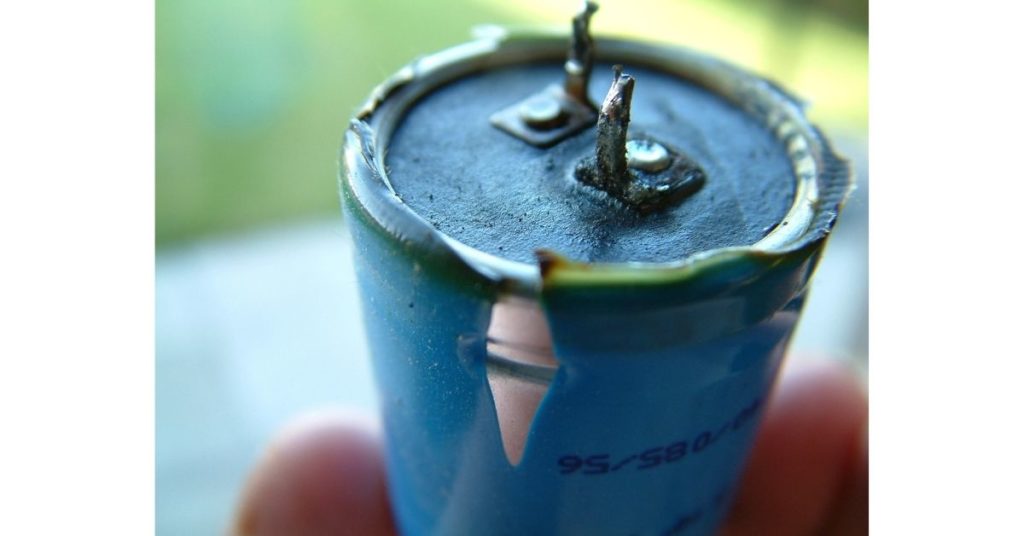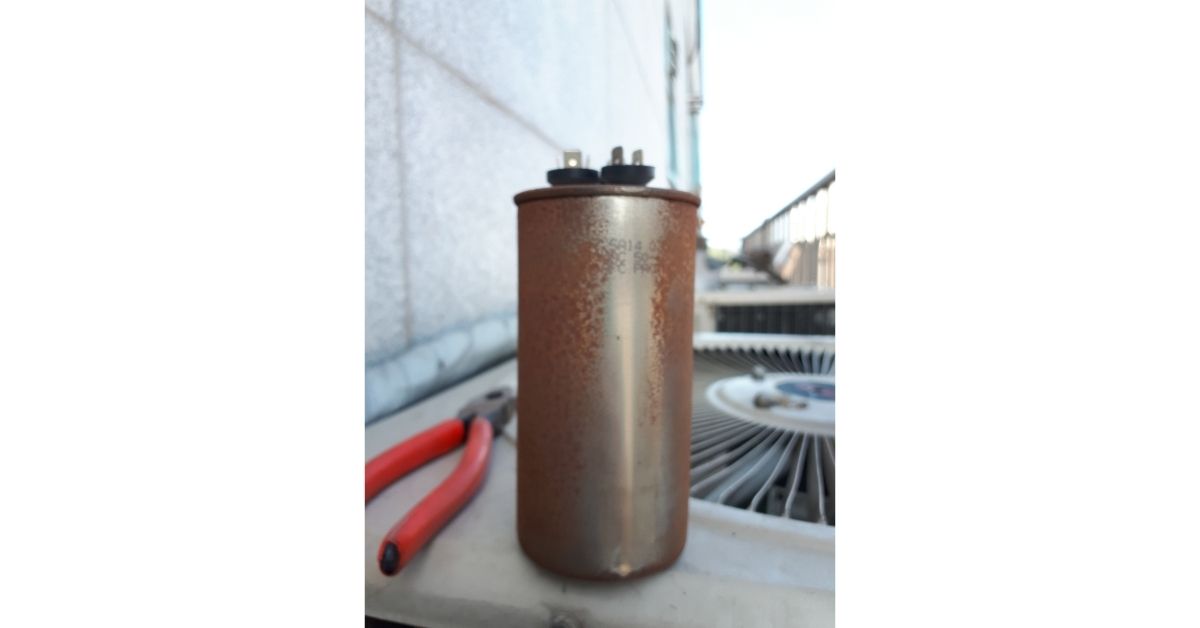If you have a generator, you should take the time to learn everything you can about the generator capacitor. Of all the components that constitute the generator, the capacitor is one of the most important. As this guide will soon reveal, a malfunction in the capacitor will have consequences for the generator’s ability to run your home’s tools and appliances.
How Does A Generator Capacitor Work?
A capacitor is comparable to a battery because it accumulates electric charge when it connects to a power source. The capacitor has two close conductors separated by an insulator (dielectric material), with one plate accumulating a positive charge while the other develops a negative charge. When the need arises, the capacitor will give the charge it has accumulated to the generator.
What is the function of capacitors in Generators?
A capacitor has two primary functions. First of all, it stores and releases an electric charge according to the need at hand. Secondly, the capacitor is also responsible for regulating the voltage.
Types of Capacitor in Generator
The type of capacitor used in power supplies is an electrolytic capacitor. This type is polarised. People associate them with high capacitance values.
Related Post:
- Generator Choke(Working Method, Purpose, Problems & Solutions)
- What Is Automatic Voltage Regulator(AVR) For Generator?
- Generator Interlock vs Transfer Switch(What’s The Difference)
- Can You Extend a Generator Exhaust – How?
- Is Backfeeding A Generator Illegal?
How Much Is A Generator Capacitor?
You can get one for just a few dollars. Though, the actual price will depend on factors like the voltage, UF rating, and model. Some capacitors are more expensive than others.
Different Capacitor Sizes for Generator
If you want a run capacitor, I expect this type to range from 3 to 70 mfd. If you want a capacitor that exceeds 70 mfd, you are looking for a starting capacitor. You can get them in classifications of 125, 250, and 330 V
Theengineeringmindset has a comprehensive formulas that you can use to calculate the capacitor size you need. If you want to replace your generator’s capacitor, you must acquire the right size.
A capacitor that is too weak will prevent the generator from running efficiently. A capacitor that is larger than necessary may increase your energy consumption. Manufacturers spend a lot of time trying to identify the right capacitor for their products.
What Size Capacitor Do I need?
To calculate the size of the capacitor you need, get a multimeter and connect the positive and negative probes to the positive and negative terminals of the power source respectively. Take the square of the voltage the multimeter has given you and multiply it 0.5 times.
Record the figure (X). Use the generator’s documentation to identify the startup energy requirements. The startup energy requirements are normally presented in joules. Divide them by X. This will give you the size of the capacitor in farads.
Sciencing has a more concise explanation that includes an example. They will also show you how to turn the farads into microfarads.
Can I Use A Different Size Capacitor?
A capacitor of the wrong size may cause complications, including an elevation in the consumption of energy, a noisier motor, overheating, and a drop in the generator’s performance.
Adding Capacitors To A Generator
- What Happens If I Connect A Capacitor To A Generator Load?
It will improve the power factor. You can expect a better voltage profile. Though, the extent of that improvement depends on the alternator’s engine capacity.
Capacitor Problems
A capacitor is expected to last as long as the generator itself. However, a lot of people damage their capacitors by attaching loads that require more power than the generator was designed to provide.
In some cases, problems develop because of a surge. A capacitor will respond to a surge by blowing. This will protect the alternator.
Why Do Capacitors in Generator Fail?
- The functionality of a capacitor will begin to degrade as it ages. You can increase the rate at which the capacitor will fail by repeatedly exposing it to excessive current.
- The alternator can also ruin the capacitor by applying high voltages to it.
- Capacitors can also fail as a result of overheating and overuse. Some capacitors will cause a short when they fail. Others will simply stop working.
How Do You Know If A Capacitor Is Bad?
The generator will start giving you low voltage readings. Because the capacitor is damaged, it cannot hold as much energy as the generator requires to function optimally.
If you can see the capacitor, it may look swollen or deformed in some way. Some capacitors will go so far as to leak. The leaking electrolyte may look like brown crust surrounding the capacitor.
If you cannot see the capacitor, a bad capacitor will lead to a loss of power, that is to say, the generator will produce low power. IN some cases, the generator won’t produce any power at all. Though, it should be noted that this issue can also come about as a result of a bad alternator or a tripped circuit breaker.
Generator Blowing Capacitor – Why?
If the capacitor keeps blowing, you are probably overloading it by forcing the generator to produce more power than it was designed to generate. You can do this by either connecting heavy-duty appliances that exceed the generator’s capacity or attaching too many tools to the generator.

This is the reason why some manufacturers encourage consumers to check the rating of any appliance or tool they want to operate before they connect it to the generator. Doing so will prevent them from exceeding the capacity of the generator.
Additionally, the voltage rating of the tools you want to operate should impact the rating of the generator you have decided to buy. Make sure the generator is powerful enough to run every tool and appliance you want to use before you buy it.
Some other factors that can cause a capacitor to blow include bad diodes and a short in the windings.
How To Test A Capacitor in Generator ?
Testing A Capacitor With A Multimeter
- Take the capacitor out of the generator. Do this carefully. Take a screwdriver and use it to cross the capacitor’s terminals. The goal is to discharge the capacitor. If you are successful, you should hear a pop. Make sure the screwdriver has an insulated handle.
- Once the capacitor is discharged, you can touch the probes of the multimeter to the leads of the capacitor. The poles have to match, that is to say, positive to positive and negative to negative.
- The objective is to measure a capacitance that is +/- 5uf of the rating specified by the manual or written on the capacitor.
How Do You Check A Capacitor Without A Multimeter?
- If you don’t have a multimeter on hand, It involves using a suitable voltage source to charge the capacitor for a maximum of 2 seconds.
- Once you accomplish this task, take a metal screwdriver and close the contacts. If the capacitor is working, you will see a bright spark. If the capacitor has a problem, the spark will either be dull or so dim that it is barely noticeable.
How To Fix The Capacitor? Troubleshooting
If your generator’s energy production is low, or if it isn’t producing any power, you can conclude that the capacitor is at fault. Though, the only way to be sure is to turn the generator off and to take the capacitor out.
Test it with a multimeter. If the capacitance (in microfarads) displayed by the multimeter doesn’t match the figure printed on the capacitor, the component has gone bad. In some cases, you don’t have to test the capacitor. You can just look at it.
If the capacitor is swollen, cracked, or domed, you need to replace it.
ut the technicians at Hackaday do not agree. If the oxide between the plates in the capacitor has degraded, their platform details a method that you can use to regrow this oxide layer.
But as you have already noticed, their arguments only apply to capacitors whose oxide has degraded. They do not say anything about capacitors that have developed other faults because it is better to replace them since they are so cheap.
Capacitor Replacement
The process of replacing a generator capacity is straightforward. Most people prefer to respond to capacitor problems by simply replacing the capacitor because capacitors are not only cheap but easy to come by.
It is a simple matter of unscrewing the connectors holding the old capacitor in place and then screwing the new capacitor into place.
Naturally, this doesn’t apply to every single generator. Some generators are more complex than others. Consult the manual if you have questions. You also have the option of calling the manufacturer if you need help identifying a suitable replacement.
Is There Anything Special About A Capacitor?
Like most electric devices with capacitors, the design, appearance, and sophistication of a generator’s capacitor will depend on the needs and demands of the generator. In other words, a capacitor is only as special as the generator. Some generator models have more complex needs than others, which is why their capacitors are so sophisticated.


Hi Mr Jackson,
I have an older model Coleman Powermate generator with a bad capacitor, it is a 35uF but has a range of volts printed on it 425v, 450v, and 500v. I purchased it new but was in the box for 5 years, and another 5 years before I got it hooked up. It only has about 70 hours on it. Mostly for 3 days last June. It worked fine until I went to start it recently. It has an auto start function and after the 3rd try it blew a charging circuit fuse, once I replaced it, it only produced 180v instead of 240v.
It is a Ducati energia, but I can’t find it anywhere. It has these numbers on it, 16.15.25.. And EN 60252-1. None of the generator repair companies will work on it since they don’t sell that brand, which is now defunct. Can you help me find a good compatible capacitor?
It seems that your Coleman Powermate generator is experiencing voltage issues due to a faulty capacitor. To find a compatible replacement capacitor, you can try contacting electronics or generator repair shops that specialize in sourcing parts for older models. You may also search online marketplaces or forums where individuals sell or trade generator parts. Be sure to provide the capacitor’s specifications (35uF, voltage range 425v, 450v, 500v) and any identifying markings to ensure you get the correct replacement. Additionally, consider consulting with electrical technicians or professionals for further assistance in locating the appropriate capacitor for your generator model.